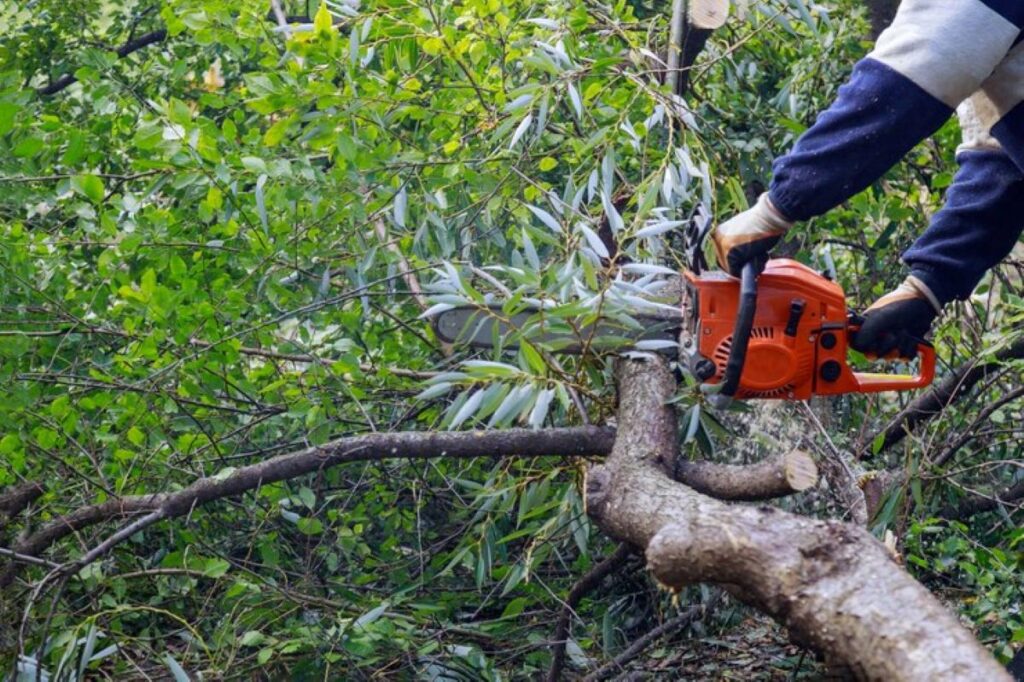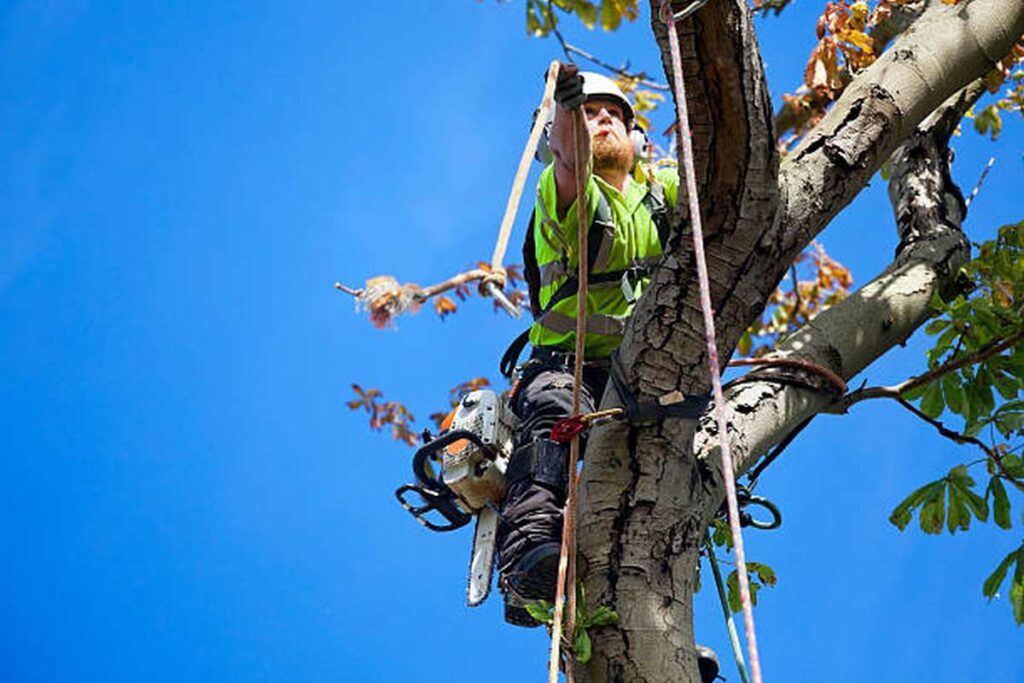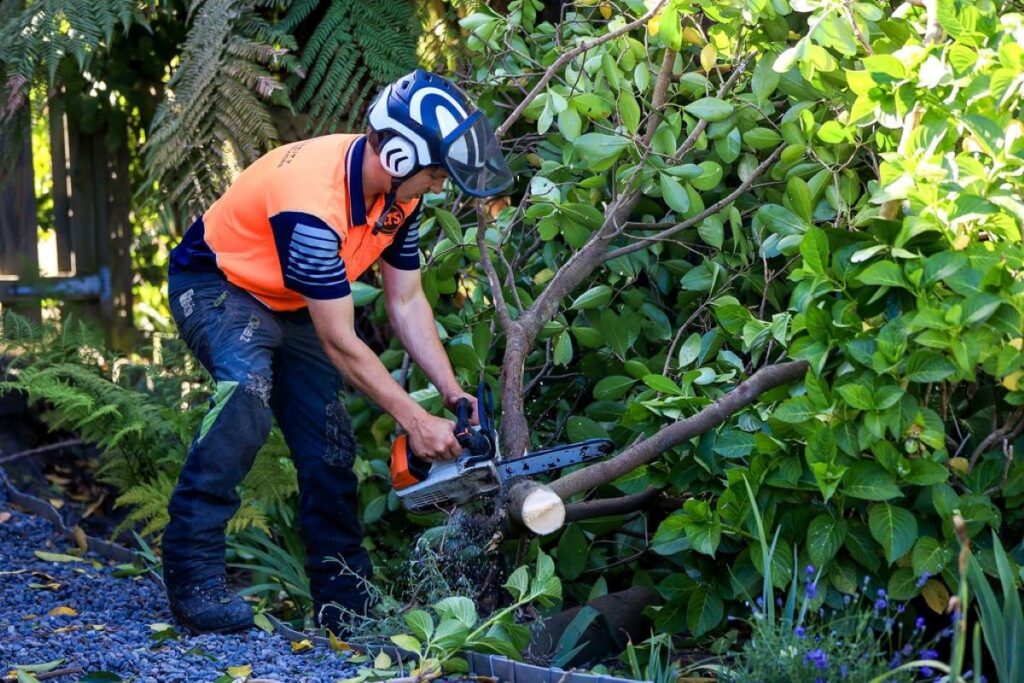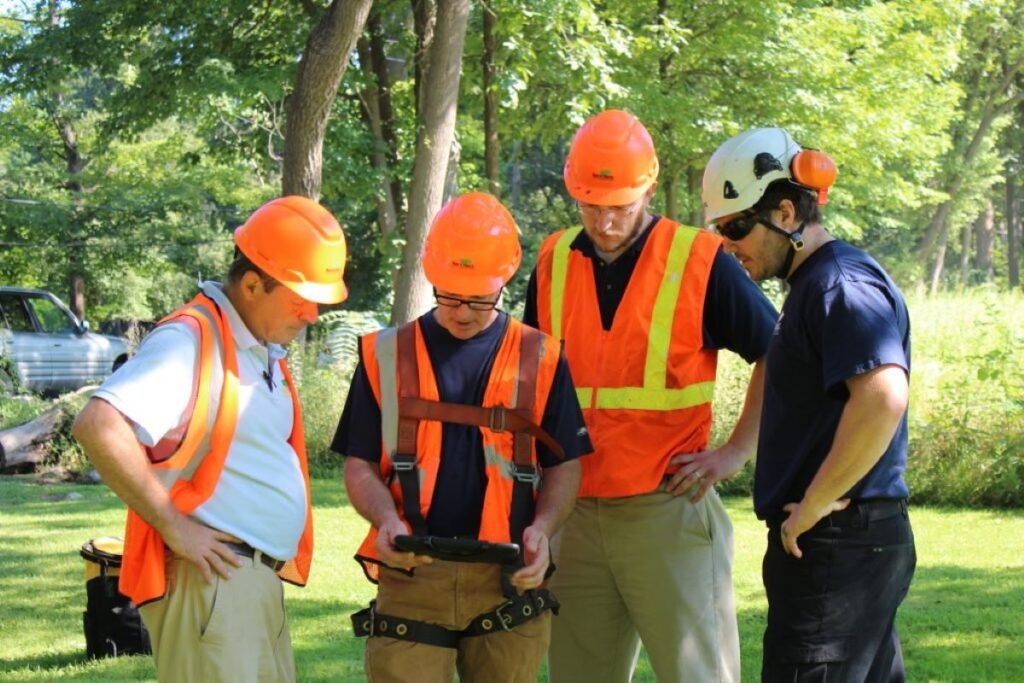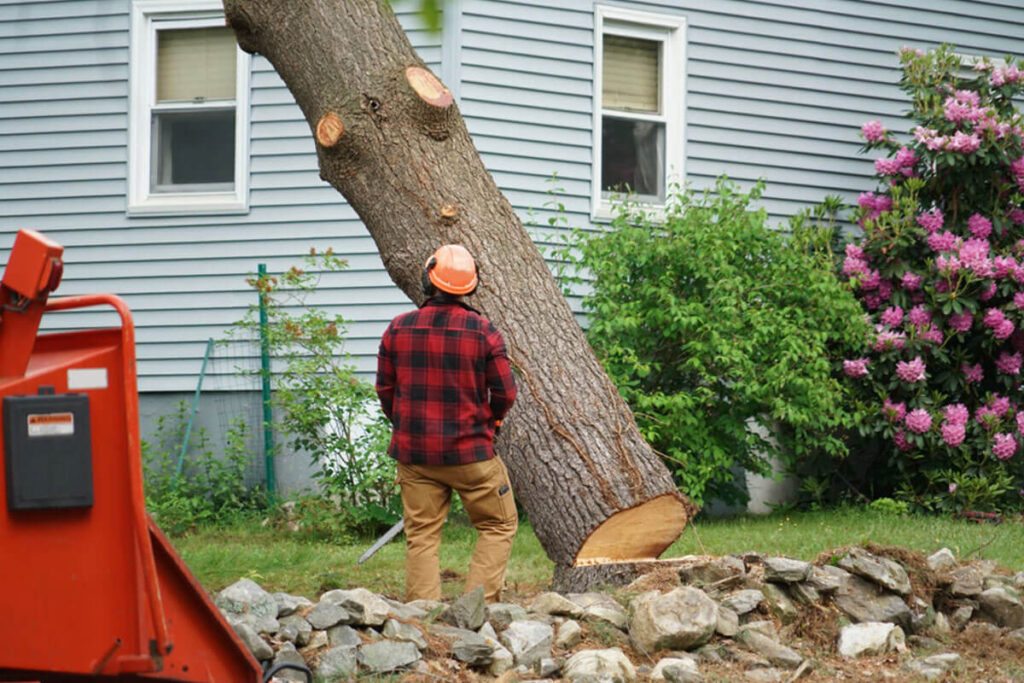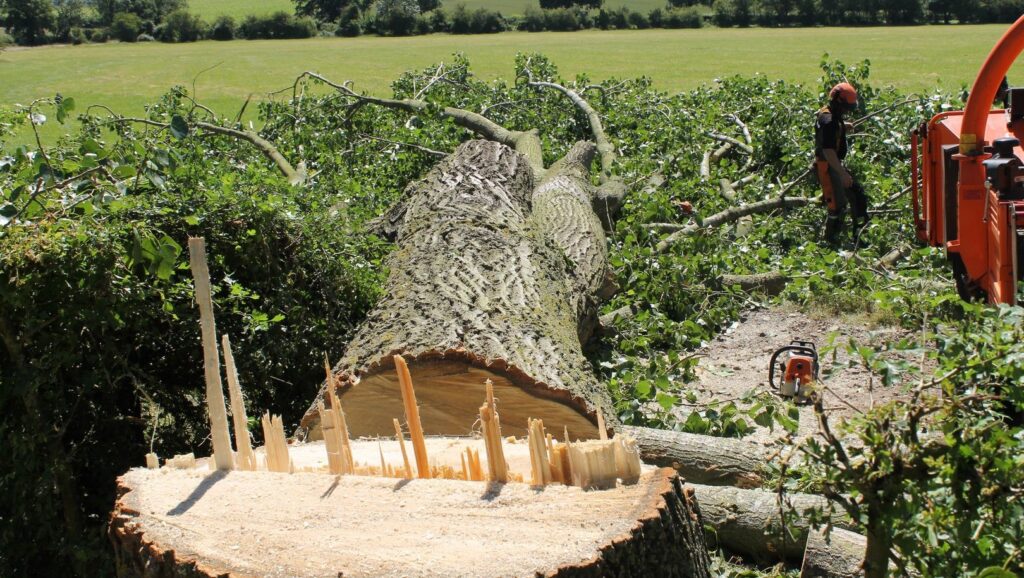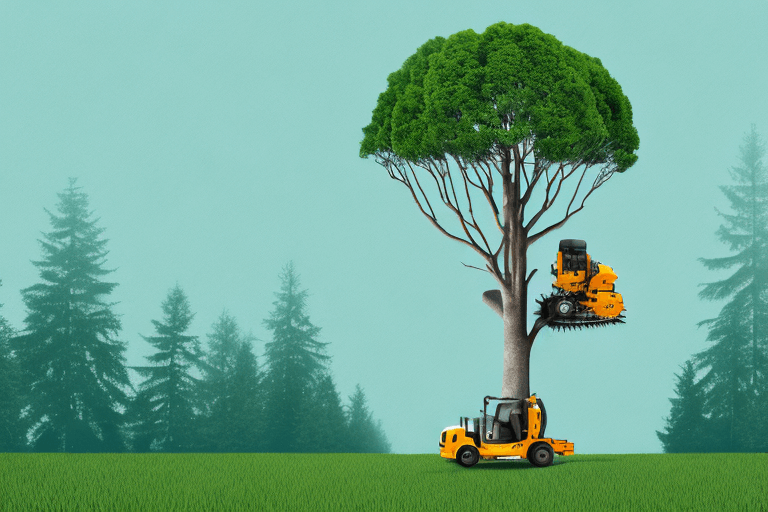Professional tree cutting services on the Central Coast provide essential maintenance and safety solutions for homes and businesses. These specialised services include a variety of tasks, such as precise pruning and complete tree removal, carried out by qualified arborists and trained technicians.
Hiring licensed tree cutting professionals ensures:
- Safety compliance with local council regulations and industry standards
- Expert assessment of tree health and potential risks
- Proper equipment and techniques for efficient removal
- Insurance coverage protecting property and personnel
- Environmental responsibility in waste management
The preservation of healthy trees through professional care brings significant benefits:
- Enhanced property aesthetics and value
- Reduced risk of property damage from falling branches
- Prevention of structural issues caused by invasive root systems
- Protection of surrounding vegetation and landscapes
- Improved safety for residents and pedestrians
Licensed tree removal Central Coast combine local knowledge with professional qualifications to provide reliable, safe, and compliant tree management solutions for the community.
Understanding Tree Cutting Services
Professional tree services encompass several distinct operations, each designed for specific situations and tree conditions:
1. Tree Removal
- Complete extraction of the tree from top to roots
- Necessary for dead, diseased, or structurally compromised trees
- Required when trees threaten buildings or infrastructure
- Essential for property development or construction projects
2. Tree Lopping
- Selective removal of branches and limbs
- Reduces tree size while maintaining structure
- Shapes trees for aesthetic purposes
- Addresses safety concerns from overhanging branches
3. Pruning
- Precise cutting of specific branches
- Promotes healthy growth patterns
- Removes dead or diseased sections
- Maintains tree shape and size
4. Stump Grinding
- Mechanical removal of remaining tree stumps
- Eliminates trip hazards and pest habitats
- Creates usable space in gardens
- Prevents regrowth and root system problems
5. Green Waste Management
- Professional disposal of branches, leaves, and wood
- Mulching services for garden reuse
- Environmentally responsible waste processing
- Compliance with local disposal regulations
Each service requires specific equipment and expertise. Tree removal suits hazardous or unwanted trees, while lopping and pruning maintain healthy specimens. Stump grinding completes the removal process, and proper green waste management ensures environmental responsibility.
Regulatory Compliance and Permits for Tree Cutting in Central Coast
Tree cutting operations in the Central Coast area are governed by strict regulations designed to protect the local environment and maintain urban greenery. The Sydney Tree Prevention Laws establish specific guidelines for tree removal and maintenance activities.
Property owners must obtain council approval before:
- Removing trees above 3 metres in height
- Pruning more than 10% of a tree’s canopy
- Performing any work on protected or heritage-listed species
- Conducting tree work within 5 metres of a property boundary
Local councils assess applications based on:
- Tree health and condition
- Safety risks to property and residents
- Impact on local wildlife habitats
- Heritage significance
- Environmental protection zones
For those seeking more information on tree management regulations for private land, it’s essential to understand that licensed tree cutting companies streamline the permit acquisition process by:
- Conducting professional tree assessments
- Preparing detailed documentation
- Liaising with council authorities
- Ensuring compliance with local regulations
- Managing application submissions
The permit application typically requires:
- Site plans showing tree locations
- Photographs of affected trees
- Arborist reports (for significant trees)
- Details of proposed work methods
- Replacement planting schemes
Penalties for non-compliance can include substantial fines and legal action. Working with licensed professionals ensures all tree cutting activities meet regulatory requirements while protecting property owners from potential liability.
Assessment and Planning for Safe Tree Cutting in Central Coast Area
Professional tree cutting requires thorough assessment and strategic planning to ensure safety and optimal results. A comprehensive tree health assessment identifies potential risks and determines the most appropriate removal method.
Key Assessment Factors:
- Tree structural integrity
- Disease presence or pest infestation
- Root system condition
- Proximity to buildings and power lines
- Soil stability
- Weather conditions impact
Safe Tree Removal Planning Steps:
- Site inspection and risk evaluation
- Equipment and resource allocation
- Access point identification
- Safety zone establishment
- Emergency response protocol development
Professional arborists play a crucial role in executing safe tree removal operations. These specialists possess extensive knowledge of tree biology, cutting techniques, and safety protocols. Their expertise helps:
- Identify hazardous branches and decay
- Select appropriate cutting equipment
- Determine optimal cutting angles
- Protect surrounding vegetation
- Minimise property damage risks
Safety Equipment Requirements:
- Personal protective gear
- Specialised cutting tools
- Safety harnesses
- Emergency response kit
- Traffic management equipment
A methodical approach to tree assessment and removal planning safeguards property, workers, and residents. Licensed arborists conduct thorough evaluations to develop tailored removal strategies that address specific site challenges and safety considerations.
In addition to these factors, understanding tree species characteristics can significantly aid in the assessment process. This knowledge helps in identifying the right removal technique based on the specific type of tree.
Furthermore, it’s essential to implement safety measures during the removal process to ensure the well-being of both the workers involved and the surrounding environment. These measures include proper use of safety equipment, adherence to established protocols, and readiness to respond to emergencies.
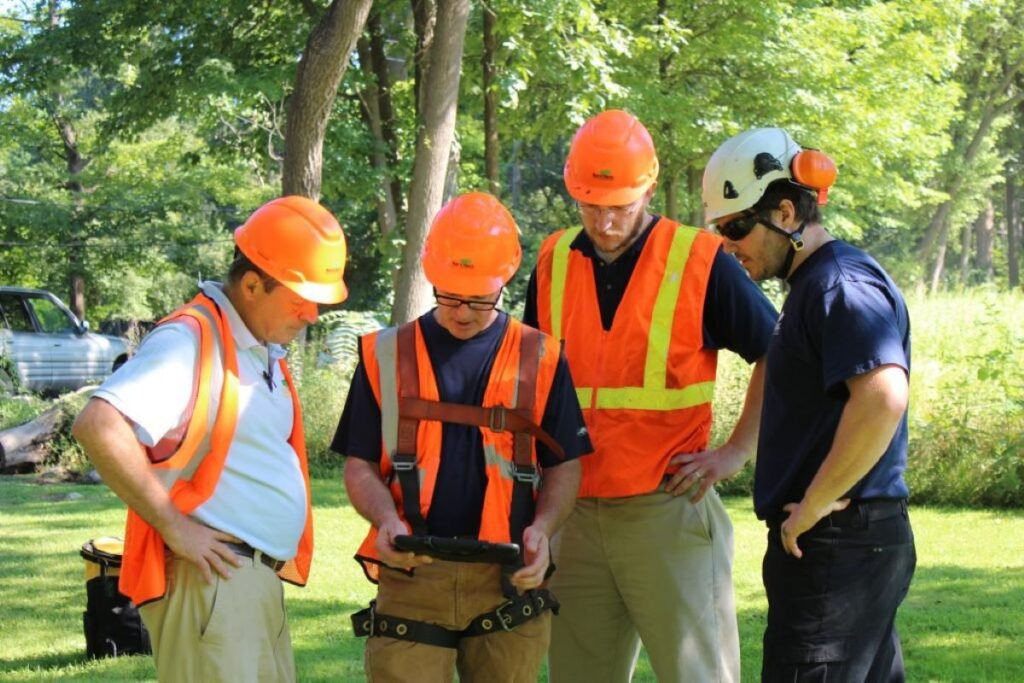
Choosing the Right Licensed Tree Cutting Company on the Central Coast
Selecting a qualified tree cutting service requires careful consideration of several essential criteria. A reputable company must hold valid licenses, insurance coverage, and industry certifications.
Essential Credentials to Verify:
- Public liability insurance (minimum $20 million coverage)
- Workers’ compensation insurance
- Australian Arborist certification
- Current business license
- Safety compliance certificates
Local knowledge plays a vital role in tree service delivery. Companies familiar with Central Coast’s unique environmental conditions, native species, and council regulations deliver more effective solutions. Their experience with local soil types, weather patterns, and common tree diseases ensures appropriate treatment approaches.
Trusted Local Providers:
Coastal Tree Experts
- 25+ years of local experience
- Specialised in heritage tree preservation
- Full-service arborist team
Bunyon Bros.
- Family-owned since 1985
- 24/7 emergency response capability
- Comprehensive council permit assistance
Tope’s Tree Service
- Advanced climbing techniques
- Modern equipment fleet
- Eco-friendly waste management
Before hiring any tree service, request detailed quotes, check client testimonials, and verify their safety record. Professional companies willingly provide references and showcase their previous work through photographs or site visits.
Comprehensive Services Offered by Tree Cutting Companies in Central Coast Area
Licensed tree cutting companies on the Central Coast provide an extensive range of professional arboricultural services to meet diverse property needs:
1. 24/7 Emergency Response Services
- Rapid response to storm damage
- Immediate removal of fallen trees
- Swift clearing of blocked access ways
- Emergency branch removal from structures
2. Professional Tree Management
- Precision tree removal
- Expert pruning and shaping
- Stump grinding and removal
- Green waste disposal and recycling
- Site clearing and mulching services
3. Post-Service Care
- Thorough site inspections
- Safety compliance checks
- Property damage assessment
- Soil condition evaluation
- Root system analysis
4. Specialised Tree Care Guidance
- Customised maintenance schedules
- Disease prevention strategies
- Growth management advice
- Species-specific care instructions
- Seasonal pruning recommendations
These comprehensive services extend beyond basic tree removal to include detailed assessments and ongoing care recommendations. Professional arborists conduct thorough post-removal inspections to verify site safety and structural integrity. Each service adheres to strict safety protocols and environmental guidelines, ensuring optimal results while protecting surrounding vegetation and property features.
Environmental Responsibility and Sustainability Practices in Tree Cutting Services
Licensed tree cutting services on the Central Coast demonstrate strong commitment to environmental stewardship through sustainable practices and responsible vegetation management. These companies implement comprehensive environmental assessment protocols before any tree removal or land clearing activities.
Key Sustainability Practices:
- Native species preservation and protection
- Wildlife habitat consideration
- Soil conservation techniques
- Water runoff management
- Selective vegetation removal
Environmental assessments play a vital role in preserving local ecosystems. Professional arborists conduct detailed site evaluations to:
- Identify protected plant species
- Map significant wildlife corridors
- Assess soil stability
- Document water course impacts
- Determine appropriate removal methods
Green waste management represents another crucial aspect of sustainable tree cutting practices. Companies employ various recycling methods:
- Wood chipping for mulch production
- Timber salvage for landscaping
- Composting of organic materials
- Biomass fuel creation
- Local garden centre partnerships
These practices align with Central Coast Council’s environmental guidelines while supporting the region’s biodiversity. Licensed tree services maintain detailed records of their environmental impact assessments and waste management procedures, ensuring transparency and accountability in their operations.
Professional tree cutting companies also invest in specialised equipment designed to minimise environmental disruption during removal processes. This includes low-impact machinery and precision cutting tools that reduce soil compaction and protect surrounding vegetation.
See Also : Tree Lopping Services Blue Mountains: Safe and Efficient tree removal blue mountains
Case Study Spotlight: Bunyon Bros. Tree Service in San Luis Obispo County
Established in 1993, Bunyon Bros. Tree Service stands as a cornerstone of professional arboriculture in San Luis Obispo County. This family-owned business has built its reputation through three decades of dedicated service to local communities.
Key Service Capabilities:
- 24/7 emergency response team
- Complete permit acquisition assistance
- Professional tree risk assessment
- Advanced tree removal techniques
- Comprehensive stump grinding services
The company’s round-the-clock emergency service has proven invaluable during severe weather events, with rapid response times averaging 30 minutes within San Luis Obispo County. Their skilled teams have managed critical situations from fallen trees on power lines to storm damage clearance.
Service Coverage Areas:
- San Luis Obispo County
- Northern Santa Barbara County
- Coastal regions
- Rural properties
- Urban environments
Bunyon Bros. maintains an impressive 98% customer satisfaction rate, backed by hundreds of positive reviews from local residents. Their expertise in permit handling has streamlined complex tree removal projects, particularly in protected coastal zones.
The company’s commitment to quality is evident through their investment in state-of-the-art equipment and continuous staff training. Their fleet includes specialised vehicles and machinery designed for challenging terrain common to Central Coast properties.
Local property owners praise Bunyon Bros. for their detailed project documentation and transparent pricing structure. Their thorough approach to each job, from initial assessment to final clean-up, reflects their deep understanding of Central Coast’s unique environmental conditions.
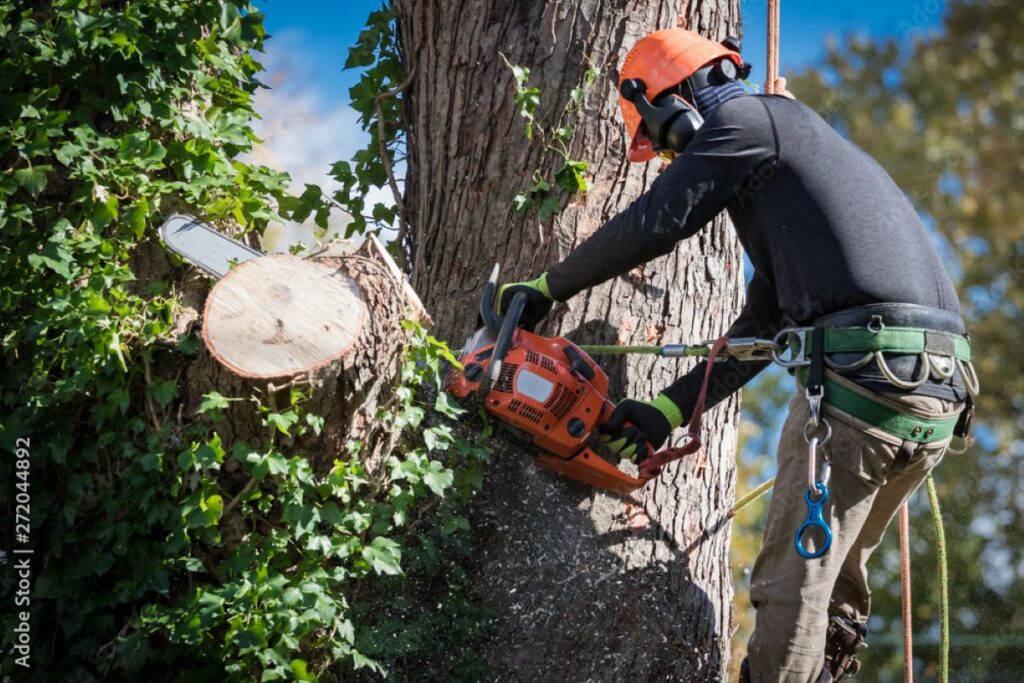
Safety Measures and Insurance Coverage in Tree Cutting Services
Professional tree cutting services maintain comprehensive insurance coverage to protect both clients and workers during operations. A robust insurance package includes:
- Public Liability Insurance – Safeguards property owners against potential damage during tree cutting operations
- Professional Indemnity Insurance – Covers advice-related claims and professional services
- Workers’ Compensation – Protects employees in case of workplace injuries or accidents
Licensed tree services implement detailed risk management plans that address:
- Pre-job Safety Assessments
- Site inspection for hazards
- Equipment safety checks
- Weather condition monitoring
- Operational Safety Protocols
- Designated safety zones
- Traffic management systems
- Emergency response procedures
- Personal Protective Equipment (PPE)
- Safety helmets and eye protection
- High-visibility clothing
- Cut-resistant gear
Risk mitigation strategies include regular staff training, equipment maintenance schedules, and documented safety procedures. These measures create a secure working environment while protecting client interests.
Licensed tree cutting companies on the Central Coast maintain up-to-date insurance certificates and display them upon request. This transparency ensures clients can verify coverage levels before work commences.
The combination of comprehensive insurance coverage and stringent safety protocols demonstrates a professional tree service’s commitment to responsible business practices and workplace safety.
Conclusion
Professional tree maintenance requires careful thought and expert handling. Trusted licensed tree cutters on the Central Coast bring essential knowledge, proper insurance coverage, and comprehensive safety measures to protect properties and people.
A systematic way to choose tree cutting services includes:
- Checking current licenses and insurance documents
- Reading customer testimonials and reviews
- Asking for detailed written quotes
- Verifying credentials of staff arborists
- Confirming assistance with council permits
Safe, professional tree maintenance preserves property value while protecting the local environment. Licensed tree cutting services across the Central Coast region show their commitment to industry best practices through:
- Regular training and certification of staff
- Use of modern equipment and techniques
- Strict compliance with Australian safety standards
- Proper disposal and recycling of waste
- Ability to respond to emergencies
Contact reputable local tree cutting professionals to discuss specific property needs and maintain healthy, hazard-free trees for years to come.

